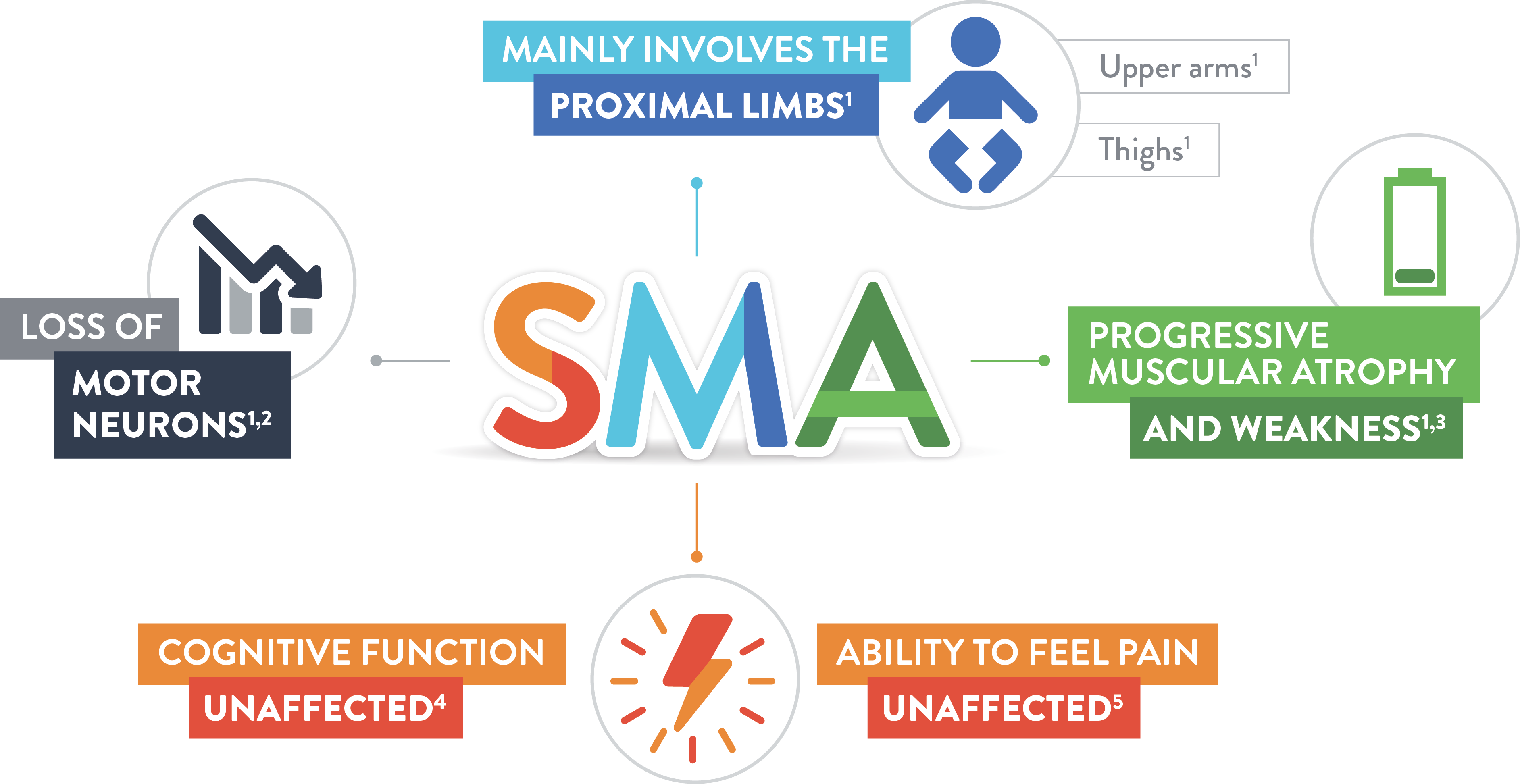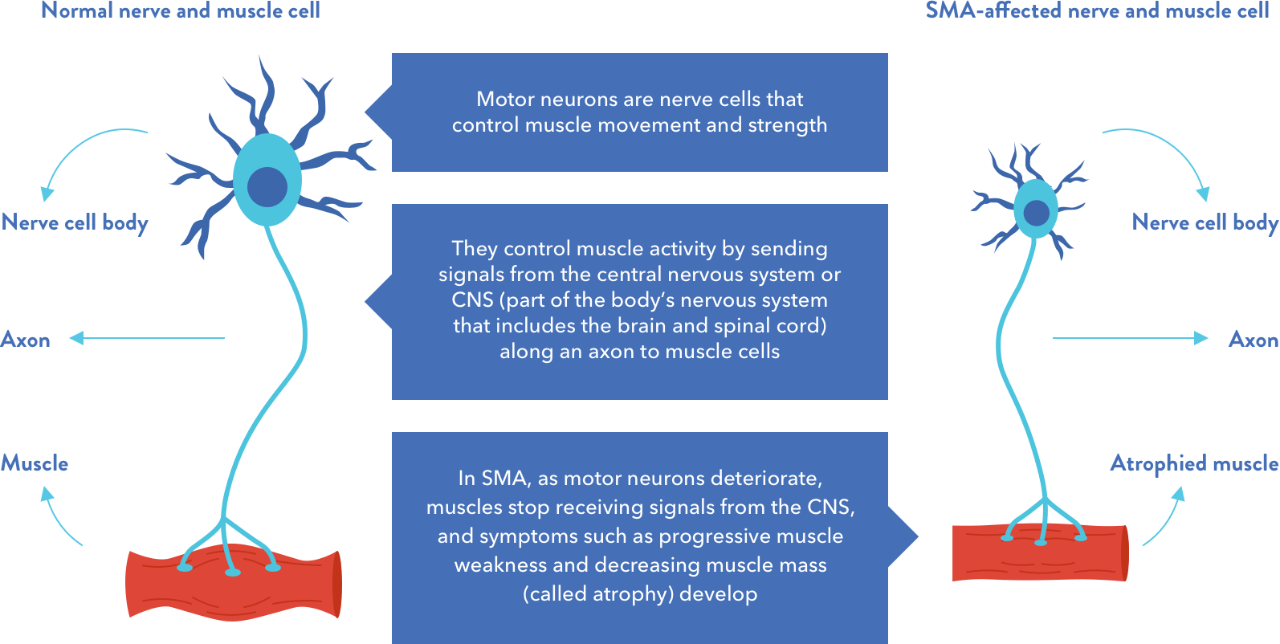


-
Argentina (Español)

-
Australia (English)

-
Brazil (Portugues)

-
Canada (English)

-
Canada (Français)

-
Chile (Español)

-
Denmark (Danish)

-
Deutschland (Deutsch)

-
Europe (English)

-
France (Français)

-
Italia (Italiano)

-
日本 (日本語)

-
대한민국 (한국어)

-
Polska (Polskie)

-
Portugal (Portuguese)

-
Russia (Russian)

-
Spain (Español)

-
Sverige (Svenska)

-
Schweiz (Deutsch)

-
台灣 (中文)

-
Türkiye (Türkçe)

-
United States (English)

-
UAE (العربية)

Spinal muscular atrophy (SMA) explained
SMA is a rare genetic disease that affects the part of the nervous system that controls voluntary muscle movement.
What is SMA?
In SMA, there is a loss of important cells in the spinal cord called motor neurons. Over time, the breakdown of these neurons leads to a gradual decline in muscle size and strength.




What is the underlying cause of SMA?2,3,6


SMA is caused by a mutation in a gene called the survival motor neuron 1 (SMN1) gene.
The SMN1 gene is responsible for producing survival motor neuron (SMN) protein, which helps keep motor neurons healthy.
In individuals with SMA, both copies of the SMN1 gene are deleted or damaged


As a result, no SMN protein is produced and over time motor neurons are lost, leading to the symptoms of SMA
Low levels of SMN protein are partially
compensated for by the SMN2 gene7


Nearly all people have a gene that is nearly identical to SMN1, known as the survival motor neuron 2 (SMN2) gene.


Only 10% of the SMN protein it produces is fully functional.
What are the effects of SMA?3
SMA affects everyone differently and symptoms can vary greatly according to age and disease severity.
Over time, muscles closest to the centre of the body become weaker, such as those around the shoulders, thighs, and hips. These muscles are responsible for actions
such as:
- head control/movement
- sitting up
- crawling
- walking
Sometimes, breathing and swallowing may also be affected.
It is believed that SMA does not affect the neurons responsible for cognition (the activities of thinking, understanding, learning and remembering). A study has found that children and adolescents with SMA have normal intelligence, with IQs in the standard range.


How is SMA managed?
Every individual with SMA will experience symptoms differently, and there are many aspects to care. A multidisciplinary approach that includes a variety of medical specialists is recommended and aims to extend life and improve overall health and quality of life.
Recent scientific advances and improvements in symptom management have helped change the outlook for many people with SMA. Be sure to ask your healthcare professional about care options.
For further information about SMA, speak to your
healthcare professional.


SMA UK provides further support to the UK SMA
community, offering advocacy, news and research updates,
regular fundraising events and more.
- Faravelli I et al. Nat Rev Neurol 2015; 11: 351–9.
- Lunn MR and Wang CH. Lancet 2008; 371: 2120–33.
- SMA UK. Symptoms, diagnosis & effects of 5q spinal muscular atrophy. Available at: https://smauk.org.uk/symptoms-diagnosis-effects-of-5q-sma. Accessed February 2023.
- Polido GJ, et al. Dement Neuropsychol 2019; 13: 436-443.
- Abresch RT, et al. Am J Hosp Palliat Care 2002; 19: 39-48.
- Wang CH et al. J Child Neurol 2007; 22: 1027–49.
- SMA UK. Modulation of SMN2, the 'back-up' gene: through small molecules. Available at: https://smauk.org.uk/back-up-gene-small-molecules. Accessed February 2023.
